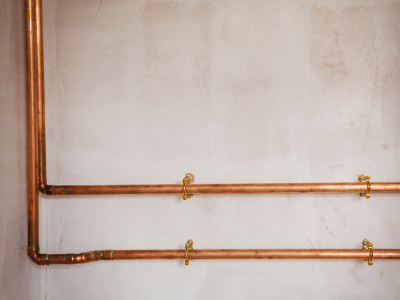When installing plumbing, putting the flow of pipes in the right places will be crucial. But, the design and construction of certain houses can make a perfect plumbing installation near impossible. So, it begs an important and timeless question: is it possible to place piping on an exterior wall?
Although it must have adequate insulation, plumbing can run along the exterior walls of a property. But this isn’t desirable because the likelihood for disaster is far too high. This will be especially true if the surrounding area is a cold climate that experiences freezing winter temperatures.
Exterior Walls Aren’t Ideal
It’s a standard in the plumbing industry that you shouldn’t install pipes in an exterior wall. It’s usually going to be better to place plumbing within an interior wall. This standard comes highly recommended by the International Residential Code of 2018 (IRC).
Some Exceptions
The only exception to not having to use insulation on exterior wall pipes, according to the EPA, is for properties located in warmer climates. This means homes in places like California, Arizona or Texas are perfectly fine to have plumbing installed in an exterior wall. This is because temperatures don’t often fall below freezing and present a danger.
When It’s the Only Option
However, sometimes the only option is an exterior wall in a cold climate. If this is the case, then every precaution must come under consideration. This means reducing as much heat loss as possible with things like insulation and caulking or foaming between the framing and the back wall of the cavity.
Whatever insulation you choose, it should nestle sound and secure between and behind the pipes and exterior wall. This airtight seal will help prevent cold air from accessing the pipes. But it’s not foolproof.
Blocking Frozen Air
Depending on the setup, anything and everything that can prevent heat loss will be worth installing along with the plumbing. The idea is to ensure the pipes won’t have a chance to freeze even in the coldest of conditions.
Unfortunately, though, when you do this you have to accept the very likely possibility that your plan will fail. Regardless of having topnotch insulation and using caulk to air-seal the interior, the chance for busted water pipes in winter remains a serious threat.
The Beauty of Piping Insulation
The “Building America Program” by the Department of Energy have studies showing how there is a bona fide heat loss that can range between 16% and 23%. Of course, this depends heavily on the climate of the surrounding area. However, wrapping ¾-inch pipe insulation can cut this down annually by four to five percent.
Various Kinds of Insulation for Plumbing
Fortunately, there’s a host of various kinds of insulation to pick from. Therefore, seriously consider the wall and how much wind and weather exposure it gets throughout the winter. For instance, avoid a wall exposed to the west without trees or other buildings; you’re asking for problems this way. But, an east-facing wall might be safe enough.
There are several forms of pipe insulation:
- Spiral Insulation Wrap
- Fiberglass Batts
- Tubular Pipe Sleeves
Some people may opt for one type while others might use a combination of all three. Regardless, the insulation must fill and wrap securely around the pipes and exterior wall. You want to use enough so that it packs firmly but not too hard. It shouldn’t put too much pressure on things like joints and fittings.
A Little Trick that Can Help
There is one trick homeowners can do in winter during those nights where it’s going to be freezing cold with a wind chill. Once the sun begins to go away for the day, turn on the hot water valve on all the faucets within the house. But let these be a mere trickle to help prevent the pipes from freezing.
Conclusion
While it’s not a good idea to install plumbing in an exterior wall, it might be the only ideal place in certain situations. When this happens, you must insulate the piping so that it doesn’t freeze and crack during winter. However, even with the best of efforts, there’s still the risk of potential problems occurring anyway.
Para leer este artículo en español, oprime aquí

